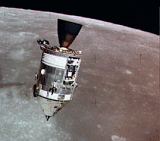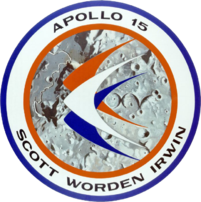Spring Bloodroot Moon
Here’s a clip from a fascinating interview with Al Worden, command module pilot for Apollo 15*. The interviewer identifies 7 men, all command module pilots for Apollo missions, as holding (having held) the loneliest job in the world. Of course, it wasn’t in or on the world, but quite far away from it. When these men were orbiting the backside of the moon, not only were they over 2,000 miles from their crew members; they were also further away from earth than any other human has ever been.
His description of the stars from there. That’s what got me.
“You were a quarter of a million miles away from home though.
Yes, you’re a long way away but the thing that most impressed me about being in lunar orbit – particularly the times when I was by myself – was that every time I came round the backside of the Moon, I got to a window where I could watch the Earthrise and that was phenomenal. And in addition to that, I got to look at the universe out there with a very different perspective and a very different way than anyone had before.
What I found was that the number of stars was just so immense. In fact I couldn’t pick up individual stars, it was like a sheet of light. I found that fascinating because it changed my ideas about how we think about the Universe.
There are billions of stars out there – the Milky Way galaxy that we’re in contains billions of stars, not just a few. And there are billions of galaxies out there. So what does that tell you about the Universe? That tells you we just don’t think big enough. To my mind that’s the whole purpose of the space programme, to figure out what that’s all about.”
* from NASA Apollo 15 site
Mission Overview
The primary objectives assigned to the Apollo mission were as follows:
- to perform selenological inspections, survey and sampling of materials and surface features in a preselected area of the Hadley-Appennius region;
- to emplace and activate surface experiments;
- to evaluate the capability of the Apollo equipment to provide extended lunar surface stay time; and
- to conduct inflight experiments and photographic tasks from lunar orbit.
